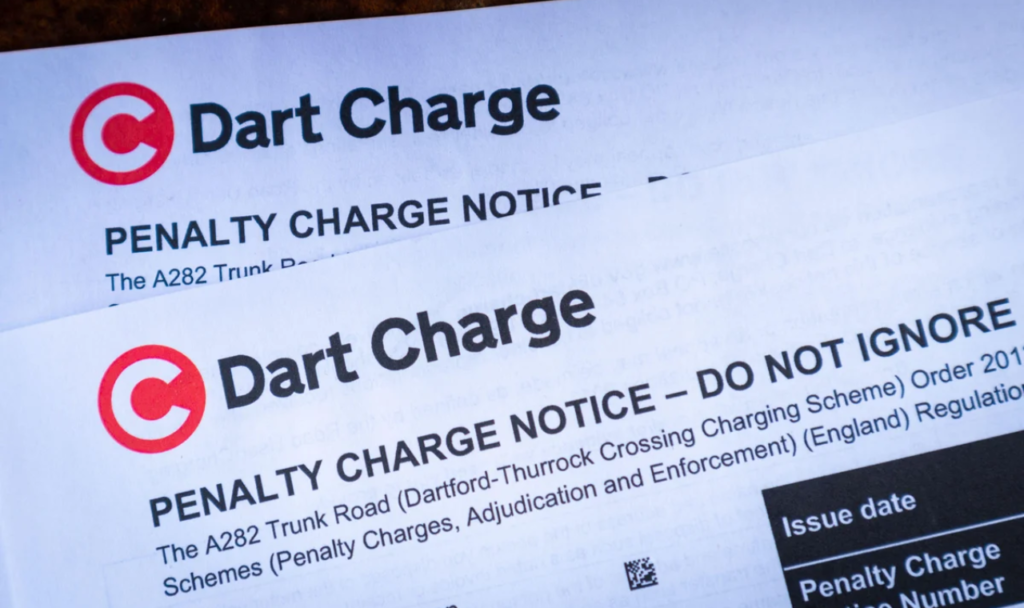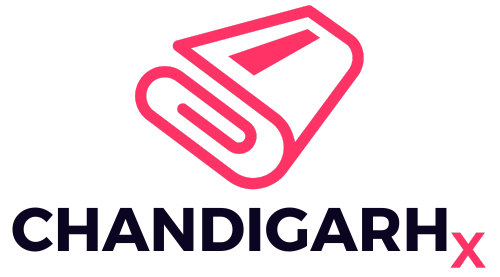The Dartford Crossing is a vital transport link between Essex and Kent, carrying over 50 million vehicles a year. Since 2014, the traditional toll booths have been replaced by the Dart Charge, an electronic toll system designed to reduce congestion. However, the shift to digital payments has also led to a surge in Penalty Charge Notices (PCNs), with over 305,000 fines issued in January alone.
Many drivers unknowingly fall into costly pitfalls, receiving fines that could have been avoided. This article explains how the Dart Charge system works, common reasons for fines, and practical steps to ensure you never pay more than you should.
How the Dart Charge Works
The Dart Charge applies to vehicles using the Dartford Crossing, which includes both the Queen Elizabeth II Bridge (southbound) and the Dartford Tunnels (northbound). Instead of paying at a toll booth, drivers must pay the charge online, via phone, or by setting up an account.
Standard Toll Fees (as of 2024):
- Cars (including small vans): £2.50 per crossing
- Larger vans, minibuses: £3.00
- HGVs, coaches: £6.00
- Motorcycles: Free
Payment Deadline:
The charge must be paid by midnight the day after the crossing.
Discount Option:
Drivers who set up a Dart Charge pre-pay account receive a discount-cars, for example, pay only £2.00 per crossing instead of £2.50.
Exemptions
Certain vehicles and drivers can cross for free, including:
- Motorcycles
- Vehicles registered as disabled (Blue Badge holders)
- Emergency vehicles
- Residents of Dartford and Thurrock (discount scheme available)

Common Reasons for Receiving a Dart Charge Fine
Despite the simple payment system, many drivers still receive fines-often unknowingly. Here’s why:
1. Missed Payments
One of the biggest causes of fines is forgetting to pay by midnight the next day. Unlike traditional toll booths, there are no reminders when crossing, making it easy to overlook.
Penalty Charge Breakdown:
- Initial fine: £70
- If paid within 14 days: Reduced to £35
- If unpaid after 28 days: Increased to £105
Tip: Set up a Dart Charge pre-pay account to automate payments and avoid missed deadlines.
2. Late or Incorrect Payments
Even if you attempt to pay late, your fine remains valid. Payments made after the deadline don’t count toward the crossing but instead get stored as future credit.
Solution: Always check your payment confirmation and ensure you are paying for the correct date and vehicle.
3. ANPR (Automatic Number Plate Recognition) Errors
Dart Charge relies on ANPR cameras to identify vehicles. However, errors happen, such as:
- Misreading dirty or damaged plates
- System glitches leading to incorrect fines
4. Registered Card Expiry
Many drivers who set up automatic payments still get fined because their saved debit/credit card expires.
Solution: Regularly update your payment details at the Dart Charge account portal.
5. Vehicle Change or Incorrect Registration
If you’ve recently bought, sold, or changed your vehicle, ensure your Dart Charge account is updated with the correct registration number.
Example: If you drive a rental car or use a company vehicle, ensure that someone has paid the charge before crossing.
How to Avoid Paying More Than You Should
Follow these essential tips to prevent unnecessary Dart Charge fines:
1. Set Up an Auto-Pay Account
Registering for an automatic Dart Charge account means payments are made instantly after each crossing, eliminating the risk of forgetting.
2. Check and Update Your Payment Details
If you’ve changed banks, received a new card, or changed vehicles, double-check that your account is up to date.
3. Pay Immediately After Crossing
If you don’t want an account, pay as soon as you cross to avoid forgetting.
Ways to Pay:
- Online at www.gov.uk/dart-charge
- Via phone: 0300 300 0120
- At PayZone retailers across the UK
4. Be Aware of Deadlines and Changes
The Dart Charge system has faced occasional rule changes, such as updates to discount schemes or payment methods. Check GOV.UK for updates.
What to Do If You Receive a Fine
If you get a Penalty Charge Notice (PCN), follow these steps:
1. Check If It’s Valid
Mistakes happen, so verify that the fine is correct. Log in to your Dart Charge account to check payments.
2. Pay Promptly to Reduce the Fine
If the fine is justified, paying within 14 days reduces it from £70 to £35.
3. Appeal If Necessary
If you believe you were wrongly fined, you have the right to appeal. You can challenge a PCN under these conditions:
- You paid on time but still received a fine
- You were wrongly identified as the vehicle owner
- ANPR misread your number plate
Appeal here: Dart Charge penalty appeal
Important: If your appeal is rejected, you can escalate it to the Traffic Penalty Tribunal (www.trafficpenaltytribunal.gov.uk).
Final Thoughts
While the Dart Charge system helps traffic flow, it has led to millions in fines due to missed payments, system errors, and simple mistakes. By staying informed, setting up auto-pay, and checking your details regularly, you can avoid costly penalties and travel stress-free.

Pankaj Kumar is a journalist at Chandigarh X, covering admit cards, recruitment, and government schemes. His articles provide readers with detailed insights into application processes, eligibility, and exam updates.
Outside of work, Pankaj enjoys traveling, fitness, and cricket, often participating in local matches on weekends.



